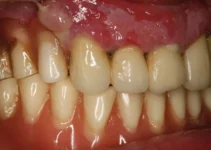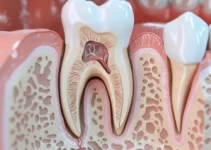When considering teeth whitening, one of the first questions many people have is about the cost. Teeth whitening can vary significantly in price depending on several factors. These include the type of whitening procedure chosen, the dentist’s fees, the location of the clinic, and the specific needs of your teeth. Over-the-counter solutions might be cheaper, but professional treatments, though more expensive, typically offer quicker and more effective results. This article explores the various factors that affect teeth whitening costs and helps you understand what you might expect to pay for a brighter smile.
Professional Teeth Whitening Procedures
Professional teeth whitening procedures have become increasingly popular due to the desire for a brighter and more attractive smile. Unlike over-the-counter products, professional whitening treatments offer a higher level of efficacy and safety. These procedures are typically administered or prescribed by a dental professional, ensuring that the patient’s oral health is not compromised during the process. There are two main types of professional teeth whitening methods: in-office whitening and take-home whitening kits.
Both in-office treatments and take-home kits utilize high concentrations of bleaching agents such as hydrogen peroxide or carbamide peroxide. The primary difference lies in the environment in which the treatment is administered and the duration of the whitening process. Selecting the appropriate method depends on several factors, including the degree of discoloration, patient preferences, and time constraints. Below, we explore the specifics of each method in greater detail.
In-Office Whitening
In-office whitening, also known as chairside bleaching, is performed by a dental professional in a clinical setting. This method is often favored for its quick and noticeable results. The procedure typically involves the application of a high-concentration bleaching agent directly to the teeth. To protect the soft tissues of the mouth, barriers or coatings are used to isolate the gums and lips from the bleaching agent.
The in-office whitening process usually takes about one to two hours. During this time, a dental professional may employ a specialized light or laser to enhance the efficacy of the bleaching agent. This light activation accelerates the breakdown of the peroxide, allowing the whitening agent to penetrate the enamel more effectively and remove deeper stains.
Clinical studies indicate that in-office whitening can lighten teeth by as many as eight shades in a single session. These immediate results make it an ideal choice for individuals seeking a rapid improvement in their smile, such as before weddings, job interviews, or other significant events. However, it is important to note that individuals may experience temporary tooth sensitivity or gum irritation following the procedure.
Take-Home Whitening Kits
Take-home whitening kits provided by dental professionals offer a convenient and flexible alternative to in-office treatments. These kits typically include custom-fitted trays and a supply of a lower-concentration bleaching agent. The custom trays are designed to fit snugly over the patient’s teeth, ensuring even distribution of the whitening gel and minimizing contact with the gums.
Patients are generally instructed to wear the trays for a specified period each day, ranging from a few hours to overnight, depending on the concentration of the bleaching agent and the desired level of whitening. The treatment duration ranges from several days to a few weeks, with gradual improvements becoming evident over time.
One of the significant advantages of take-home kits is the ability to perform the treatment at one’s own convenience. This method is also more cost-effective compared to in-office procedures. While the results may not be as immediate, many patients achieve comparable levels of whitening after completing the recommended treatment course.
Studies have shown that take-home whitening kits, when used correctly, can yield long-lasting results. Proper adherence to the provided instructions and regular follow-up appointments ensure optimal outcomes and minimize potential side effects such as tooth sensitivity.
Professional teeth whitening is an excellent option for those looking to enhance the appearance of their smile. For more comprehensive insights into oral health and aesthetic dental treatments, consider exploring our other informative articles.
Cost Factors for Teeth Whitening
When it comes to achieving a brighter smile, the cost of teeth whitening can vary significantly based on several factors. Understanding these cost factors can help you make an informed decision and ensure you get the best value for your investment. One of the primary considerations is the type of teeth whitening method you choose. Broadly, teeth whitening falls into three categories: in-office whitening, take-home kits from your dentist, and over-the-counter products. Each of these options comes with its own set of costs and benefits.
In-office whitening is often the most expensive option but provides the quickest and most dramatic results. This procedure is performed by a dental professional and usually requires only one visit. The cost is typically higher because it involves specialized equipment and professional expertise. On the other hand, take-home kits from your dentist are a middle-ground option. These kits include custom-made trays and professional-grade whitening gel, offering a balance between convenience and effectiveness. Lastly, over-the-counter products like whitening strips and toothpaste are the least expensive, but they also tend to be the least effective and require more time to see results.
Several other factors can influence the cost of teeth whitening, including the geographic location of the dental clinic, the experience and reputation of the dentist, and any additional treatments that may be needed. For instance, some patients may require a dental cleaning or treatment for sensitivity issues before they can proceed with whitening. Additionally, the condition of your teeth and the extent of staining can also impact the overall cost. Teeth with more severe staining may require multiple sessions or higher concentrations of whitening agents, both of which can add to the expense.
In conclusion, while the cost of teeth whitening can vary widely, understanding the different factors involved can help you choose the best option for your needs and budget. For more detailed information on teeth whitening and other dental treatments, be sure to check out our other informative articles.
Comparing Costs of Different Teeth Whitening Methods
Teeth whitening has become one of the most sought-after cosmetic dental procedures. There are several methods available, each with varying costs and levels of effectiveness. Understanding the cost differences can help you make an informed decision about which option is right for you. In this section, we will compare the costs of professional in-office whitening, dentist-prescribed take-home kits, and over-the-counter whitening products.
While the desire for a brighter smile is common, the way to achieve it can differ greatly in terms of both price and results. Knowing the benefits and limitations of each method can guide you towards the most cost-effective and efficient choice. Let’s delve into each method to better understand the financial aspects involved.
Professional In-Office Whitening
Professional in-office whitening is often considered the gold standard for achieving a brighter smile. This method involves a dental professional applying a high-concentration bleaching agent to your teeth and then using a special light or laser to enhance the whitening effect. The procedure can be completed in a single appointment, making it a convenient option for those looking for immediate results.
However, the convenience and efficacy of in-office whitening come at a price. On average, this method can cost anywhere between $500 to $1,500 per session. The high cost is attributed to the advanced technology and professional supervision involved. Despite the expense, many patients find the immediate and dramatic results to be worth the investment.
Several studies have highlighted the effectiveness of professional in-office whitening. According to the American Dental Association, this method can lighten teeth by up to eight shades in a single visit, making it one of the most potent options available. If you’re looking for quick, reliable results and are willing to pay a premium, this could be the ideal choice for you.
Dentist-Prescribed Take-Home Kits
Dentist-prescribed take-home kits offer a middle ground between professional in-office treatments and over-the-counter products. These kits usually consist of custom-fitted trays and a bleaching gel with a lower concentration of the active ingredient compared to in-office treatments. You will need to apply the gel to your teeth using the trays, usually over a period of a few weeks.
The cost of dentist-prescribed take-home kits typically ranges from $200 to $400. While this is less expensive than in-office treatments, it still provides the advantage of professional guidance. Your dentist will create a custom-fit tray, ensuring that the bleaching agent is distributed evenly over your teeth, which can enhance the effectiveness of the treatment.
Several studies suggest that while take-home kits may not offer the immediate results of in-office treatments, they can achieve comparable outcomes over time. A study published in the Journal of the American Dental Association found that take-home kits can lighten teeth by several shades when used consistently as directed. This makes them a cost-effective alternative for those who are looking for gradual, yet noticeable, improvement in tooth color.
Over-the-Counter Whitening Products
Over-the-counter whitening products are the most accessible and affordable option for teeth whitening. These products include whitening strips, gels, toothpaste, and rinses, which you can purchase at your local drugstore or online. They are designed for easy at-home use and do not require a prescription from a dentist. The cost of over-the-counter whitening products can vary widely but generally falls in the range of $20 to $100. While these products are more budget-friendly, they often contain lower concentrations of bleaching agents, which can result in slower and less dramatic results compared to professional treatments. It’s important to note that the effectiveness of over-the-counter products can be hit or miss. Some users report significant whitening, while others see minimal change. According to multiple studies, the variability in results often comes down to the concentration of the active ingredient and the user’s adherence to the instructions. Despite these limitations, over-the-counter products can be a good starting point for those new to teeth whitening.
Given the lower cost and ease of access, over-the-counter whitening products are a popular choice among many people. However, for those seeking more substantial and quicker results, professional treatments may still be the better investment.
For more information on teeth whitening and other dental procedures, check out our other articles. Stay informed to make the best choices for your dental health and achieve the brilliant smile you desire.
Long-Term Costs and Maintenance
Opting for dental implants is not only an investment in your oral health but also a significant financial commitment. While the initial costs of dental implants can be higher compared to other dental solutions, it’s essential to consider the long-term benefits and maintenance requirements. On the one hand, dental implants offer a more permanent solution to tooth loss, reducing the need for frequent replacements common with dentures. On the other hand, they require diligent care and periodic check-ups to ensure their longevity.
The long-term costs associated with dental implants encompass several variables. These include the initial surgical procedures, the cost of the implant materials, and any subsequent treatments like bone grafting or sinus lifts. Maintenance costs, although relatively low, should also be taken into account. Regular dental visits, special cleaning tools, and occasional adjustments contribute to the overall cost over time. Considering these factors helps in making an informed decision about opting for dental implants.
Despite the up-front expenses and ongoing maintenance, dental implants are often more cost-effective in the long run. Unlike dentures and bridges, which may require replacement every 5 to 10 years, dental implants can last a lifetime with proper care. This reduces the cumulative cost and inconvenience associated with other dental prosthetics. Therefore, the initial higher cost of implants is balanced by the reduced need for future dental work, making them a viable long-term investment in your oral health.
Maintenance Tips for Prolonged Results
The longevity of your dental implants largely depends on how well you maintain them. Proper maintenance ensures that your implants stay in optimal condition and minimizes the risk of complications. Here are some critical maintenance tips to follow:
- Regular Brushing and Flossing: Just like your natural teeth, dental implants require regular brushing and flossing. Use a soft-bristle toothbrush and non-abrasive toothpaste to avoid damaging the implant surface.
- Professional Cleanings: Schedule professional dental cleanings at least twice a year. This helps in removing plaque and tartar that regular brushing can’t eliminate.
- Avoid Hard Foods: Chewing on hard foods or objects can damage the implant or the bone around it. Be cautious and avoid using your teeth as tools.
Another important aspect of maintaining dental implants is regular dental check-ups. These appointments allow your dentist to monitor the condition of your implants and identify any potential issues early on. During these visits, your dentist can also provide professional cleanings specifically designed for implants, ensuring that any hard-to-reach areas are thoroughly cleaned.
Maintaining a healthy lifestyle also plays a crucial role. Smoking and excessive alcohol consumption can adversely affect the longevity of your dental implants. Both can lead to a condition known as peri-implantitis, a type of gum disease that affects the tissues around the implant. Therefore, adopting a healthy lifestyle can significantly contribute to the longevity of your implants.
By adhering to these maintenance tips, you can extend the lifespan of your dental implants, ensuring that you get the most out of your investment. For more detailed information on dental implant care and other related topics, be sure to read our other articles.
Frequently Asked Questions about Teeth Whitening Costs
If you’re considering brightening your smile with teeth whitening, it’s natural to have questions about the costs involved. Here’s a common inquiry:
What are the typical costs associated with professional teeth whitening?
The cost of professional teeth whitening can vary widely depending on several factors such as the method used, the dental clinic’s location, and the extent of the treatment required. Generally, in-office teeth whitening treatments range from $300 to $800, whereas take-home kits provided by a dentist might cost between $200 and $400. It is advisable to consult with your dentist for a precise quote and to discuss the most effective and economical options for your situation.

My name is Salman Kapa, a 73-year-old expert in bone regeneration and dental implantology. With decades of experience in the field, I am dedicated to advancing our understanding of oral health and hygiene. Through my research and writing, I aim to contribute to the development of innovative solutions in dental care.




